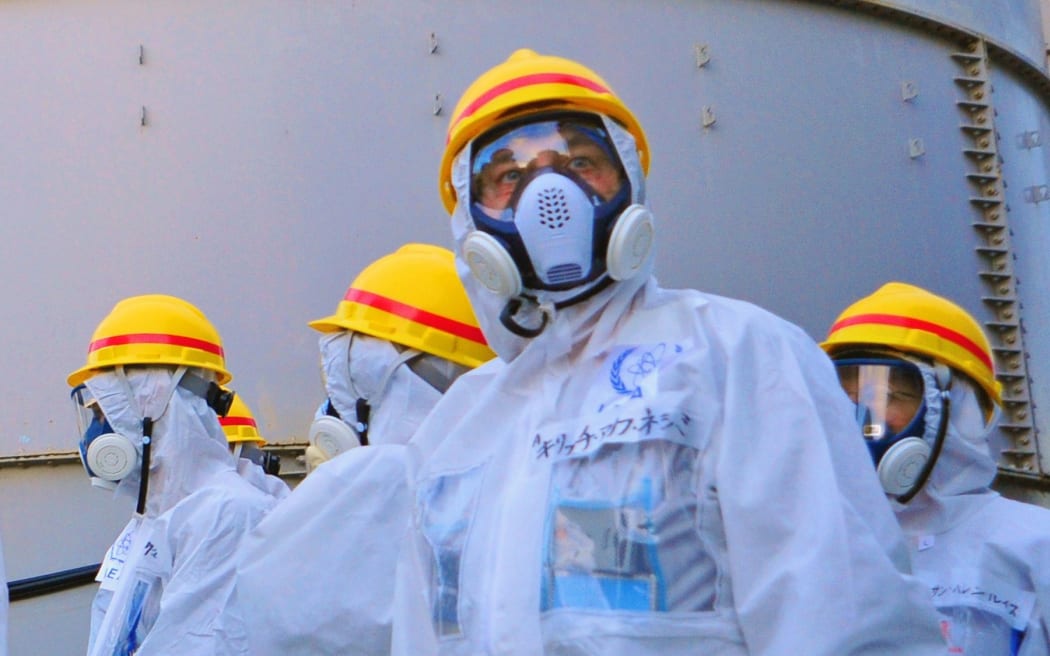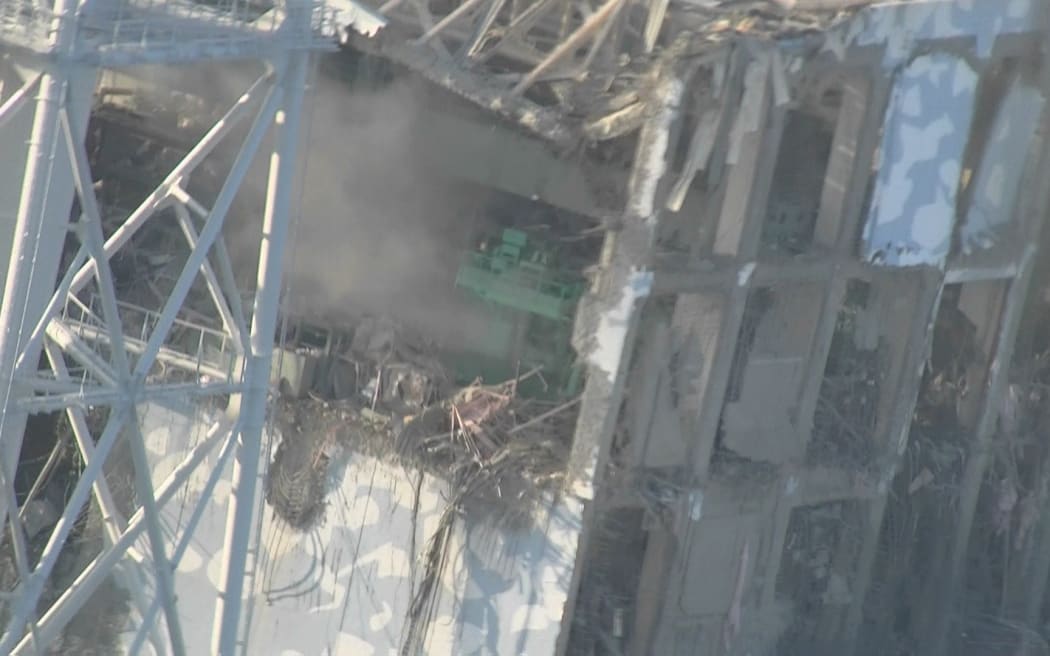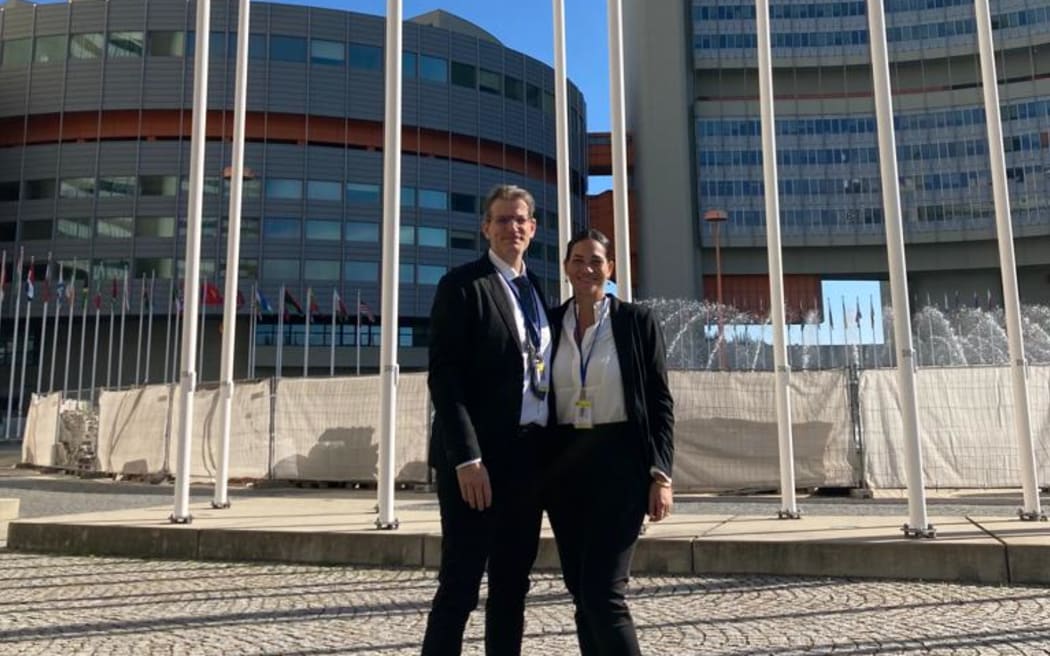By Peter Boyle in Sydney
As Pacific communities protest the Japanese government’s plan to dump more than a million tonnes of radioactive waste water from the Fukushima nuclear plant into the Pacific Ocean, Australian anti-nuclear activists are highlighting the complicity of Australian uranium exporting companies.
While the Fukushima Daiichi power station operator, Tokyo Electric Power Company (TEPCO), claims that the water will be treated to reduce radioactive content, anti-nuclear activists have no faith in TEPCO’s assurances.
The Candlelight Alliance, a Korean community group in Sydney, is organising a protest outside the Japanese consulate this Saturday.
Spokersperson Sihyun Paik told Green Left: “We have a great fear that it may already be too late to stop Japan’s release of radioactively contaminated waste water into our largest ocean, an action by which every Pacific Rim nation will be impacted.
“There are serious, global ramifications,” he said. “It will directly endanger the marine life with which it comes into contact, as well as devastate the livelihoods of those reliant on such marine life, such as fisherfolk.
“All living organisms will be implicitly affected, whether it is the unwitting consumer of contaminated produce, or even beachgoers.
“The danger posed by the plan cannot be contained within just the Northeast Asia region. In two to three years, it will eventually reach and contaminate all ocean waters to certain, yet significant degrees according to scientists.
Korean fishery victims
“The local Korean fishery industry is the first commercial victim of the Fukushima nuclear disaster and it raised deep concerns to the Korean government immediately after the explosion of the nuclear reactors.
“This was in conjunction with Korea’s progressive action groups during the term of the previous Moon Jae-In administration.
“However, since the current administration (2022), the voice of protest has been extinguished at the government level, invariably raising suspicion of possible under the table dealings between Japan’s Kishida government and current Korean President Yoon [Suk Yeol] during the latter’s recent visit to Japan.”
Epeli Lesuma, from the Fiji-based Pacific Network on Globalisation, told Green Left that “for Pacific people the Ocean represents more than just a vast blue expanse that Japan can just use as a dumpsite.
“Our Ocean represents the economic, spiritual and cultural heart of Pacific countries.
“Pacific people know all too well the cost of nuclear testing and dumping. The Pacific was used as a nuclear test site by the UK, France and the USA who carried out a total of 315 tests on Christmas Island in Kiribati, Australia, Māohi Nui or French Polynesia and the Marshall Islands.
“These nuclear legacies have cost us countless lives and continue to impact the health and well-being of our people; it has impacted access to our fishing grounds and land to plant crops to support our families; and it has cost us our homes, with Pacific people displaced (on Bikini and Enewetak) due to nuclear contamination.
Japan, Pacific share trauma
“Japan and the Pacific share the trauma of nuclear weapons and testing.
“So it comes as a deep disappointment to us that the Japanese government would consider actions that threaten not only Pacific people and our Ocean but the health and well-being of all the planet’s oceans and the people who depend upon them.
“The Pacific Ocean also contains the largest tuna fish stocks which are a source of economic revenue for our countries. The Japanese government’s plans to dump its nuclear wastewater into our Ocean pose a direct threat to the economic prosperity of our countries and in turn our developmental aspirations as well as being a fundamental breach of Pacific people’s rights to a clean and healthy sustainable environment.”
Australian anti-nuclear activist Nat Lowrey delivered a statement of solidarity from the Australian Nuclear Free Alliance when she visited affected local communities in Fukushima in March.
The statement acknowledged that uranium from the Ranger and Olympic Dam mines was in TEPCO’s Fukushima reactors when the meltdowns, explosions and fires took place in March 2011.
The ANFA statement said that “Australian governments, and mining companies BHP and Rio Tinto, are partly responsible for the death and destruction resulting from the Fukushima disaster. They knew about the corruption in Japan’s nuclear industry but kept supplying uranium.”
Lowrey said that since it was Australian uranium that fuelled the Fukushima Daiichi nuclear power plant, “the Australian government has a responsibility to stand with local communities in Fukushima as well as communities in Japan, Korea, China and Pacific Island states in calling on the Japanese government not to dump radioactive wastewater into the Pacific Ocean”.
‘Fundamental self-determination right’
“We must support Pacific peoples’ fundamental right to their sovereignty and self-determination against Japan’s nuclear colonialism.
“If Japan is to go ahead with the dumping of radioactive waste, Australia should play a lead role in taking a case to the International Tribunal for the Law of the Sea against Japan.”
Paik said no Australian government had taken serious action since the Fukushima disaster.
“Despite the Japanese government’s decision to release nuclear contaminated water into the ocean, no official statement or comment has been made by the [Anthony] Albanese government.
“We did not expect any form of government level protest on this issue due to conflicts of interest with Australia’s member status in the Quad partnership which is a key pillar in Australia’s foreign policy, and an influential determinant of our stance on nuclear energy.”
When the G7 met in Tokyo, the Japanese government urged the summit to approve the planned radioactive water release.
Tanaka Shigeru, from the Pacific Asia Resource Centre in Japan, said: “Japan did not get the approval by the G7 as it had hoped, but it stopped at saying the G7 will adhere to the conclusion of the International Atomic Energy Agency (IAEA).
‘IAEA approves release’
“The IAEA is of course approving of the release, so it is a way for them to say they have approved without explicitly saying so.”
Shigeru said that despite a three-year propaganda campaign over Fukushima, most people polled in Japan in April said that “the government has not done enough to garner the understanding of the public”.
Only 6.5 percent of those polled believe that the Japanese government has done enough.
Yet it has “done enough to keep people from the streets”, Shigeru said.
“While there are, of course, people who are still continuing the struggle, I must say the movement has peaked already after what has been a fervent three-year struggle.”
Japanese opponents of the radioactive water release, including fisherfolk, have been fighting through every administrative and legal step but now “there are no more domestic hurdles that the Japanese government needs to clear in order to begin the dumping”, Shigeru said.
“The opposition parties have been so minimised in Japan that there is very little realistic means to challenge the situation except for maybe international pressure. That is really the only thing standing in the way of the dumping.
Ambassador propaganda
“So Japan has been taking ambassadors from the Pacific nations on lucrative paid-for trips to Fukushima to spread the propaganda that the dumping will be safe.”
Lesuma confirmed the impact on swaying some Pacific Island governments, such as Papua New Guinea and the Federated States of Micronesia.
“Pacific Islands Forum member states have been some of the most vocal opponents at the international level of the Japanese government’s plans to dump their nuclear wastewater into the Pacific Ocean,” he said.
“The PIF leaders had appointed an Independent Panel of Experts who have engaged with TEPCO scientists and the IAEA to provide advice to Pacific governments on the wastewater disposal plans … the Panel has concluded unanimously that Japan should not release nuclear wastewater into the Pacific Ocean and should explore other alternatives.
“The Fiji government has been one such Pacific government consistent in coming out strongly in opposing Japan’s plans.
“The PNG Fisheries Minister, Jelta Wong, has also been vocal and consistent in expressing his disapproval of the same, going as far as saying that the nuclear wastewater discharge would create a ‘Pacific Chernobyl’ with the potential to cause harm to Pacific people for generations to come.”
Peter Boyle is a Green Left activist and contributing writer. Republished with permission.


